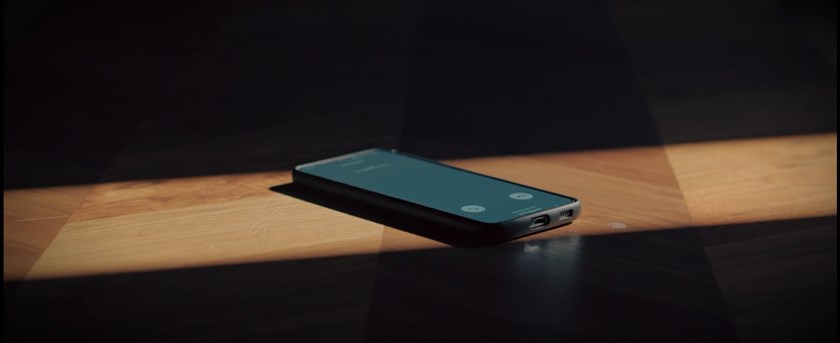Andy Murray – a rare loss
News

The world's number one tennis player suffers a rare loss off the tennis court in a surprising decision from IPSO.
The interests of children in privacy cases was a hot topic in 2016. In last year's high profile privacy case, PJS v News Group Newspapers [2016], the Supreme Court prevented The Sun from publishing the identity of a celebrity involved in an extra-marital threesome. Whilst it is likely that the Supreme Court's decision would have been the same regardless of the fact PJS is a father, the Court made it clear that his children’s interests were a prime consideration when ruling that his Article 8 rights had been infringed. They found in particular that an "exceptional public interest" would be needed to override the "paramount" interests of protecting the children's privacy and, in turn, the claimant’s. The decision in PJS very much echoed earlier rulings, notably the Court of Appeal's previous judgment in ETK v News Group Newspapers [2011], in which News Group again was prevented from publishing details of a celebrity’s affair. The Court of Appeal put weight on the "likely harmful effect on his children" if the allegations were published.
In contrast to the approach taken above, the Independent Press Standards Organisation (IPSO) rejected a complaint at the end of November 2016 by Andy Murray and his wife against The Mail and The Telegraph over photographs published of their daughter (Sophia) during the 2016 Wimbledon tennis tournament.
Sophia was photographed being pushed by her mother, in her pram, on her way to the Wimbledon crèche. Her face was partially visible in at least one of the photographs. Her parents complained that they had made it clear to the press that they did not consent to photographs of their daughter being taken by the media and that their publication was a breach of her privacy. They said that Mrs Murray was attending Wimbledon to support her husband and, as a nursing mother, she needed to take her young daughter with her. The Murrays explained that as a consequence of the photographs being published, Sophia was looked after at home for the remainder of the tournament, which disrupted her feeding arrangements. Reliance was also placed on the fact they had not released any images of their daughter.
In response to the complaint, the media claimed that Mrs Murray and her child could not have a reasonable expectation of privacy at Wimbledon. It was a high-profile public event attended by thousands of people. They also relied on the assertion that Mrs Murray and Sophia had entered via Gate 16, which they said was an entrance used by the media, where the press are routinely situated. They said that the photographer took the photographs from a position where he was entitled to be, standing approximately 50 metres from the gate when Mrs Murray arrived. The Murrays countered that Gate 16 is described by Wimbledon as a "private and contractors" entrance and said that the photographer was not in an approved position. They also sought to rely on a private advisory notice that the Murrays had circulated to the press through IPSO, with a request that photographs of their daughter not be published.
Rejecting the complaint, IPSO held that Wimbledon is a high-profile event where press photography is inevitable. Given Sophia's age and the nature of the photographs, she was not recognisable and the newspapers had not disclosed private information about her by publishing the images. The photographs were taken without the knowledge of Mrs Murray and accordingly there was no suggestion that the photographer had continued to photograph the complainant after being asked to desist or that the photographer's behaviour had otherwise harassed the complainant.
Whilst the Murray's complaint was adjudicated by IPSO, the facts are not dissimilar from those considered in court cases involving photographs of children. Of these, perhaps the most relevant is Weller v Associated Newspapers [2015], where musician Paul Weller brought a complaint on behalf of his children who were photographed on a family outing in the streets. In that instance the children were awarded £10,000 in damages for being photographed without their parents' consent while taking part in what the courts considered a private family activity. It is noteworthy that higher damages were awarded for the eldest child, due to higher levels of perceived distress. Weller followed the Court of Appeal's previous decision in Murray v Big Pictures [2008], in which the court prevented photographs of JK Rowling's infant son from being published. Ms Rowling's son had been photographed covertly, being pushed in a pram on the street in Edinburgh. The Court of Appeal's judgment emphasised the need to protect children from "intrusive media attention" and noted that they should not be targeted in circumstances where it is known that the taking of the photographs "would be objected to on behalf of the child."
The factors distinguishing the complaint on behalf of Sophia Murray from Weller and Murray appear to be that she was photographed at a high-profile event where her parents knew photographers would be present. It is however an interesting decision. For example, the fact that Kim Murray needed to bring her daughter to the event as a nursing mother is a compelling argument, as is the fact that the press had been put on notice that the Murrays did not wish for their daughter to be photographed. It is also of interest that the images of her face were not pixelated.
In summary, it is debatable whether the courts would have come to the same conclusion as IPSO, or if more weight would have been placed on the interests of the child and her parents' express wishes. What the decision makes clear, however, is that balancing the interests of children with press freedom remains a grey area in privacy cases, even in the wake of PJS.
If you require further information on anything covered in this briefing please contact Alicia Mendonca ([email protected]; +44 (0)20 3375 7614) or your usual contact at the firm on 020 3375 7000. Further information can also be found on the Brand & Reputation page on our website.
This publication is a general summary of the law. It should not replace legal advice tailored to your specific circumstances.
© Farrer & Co LLP, January 2017




